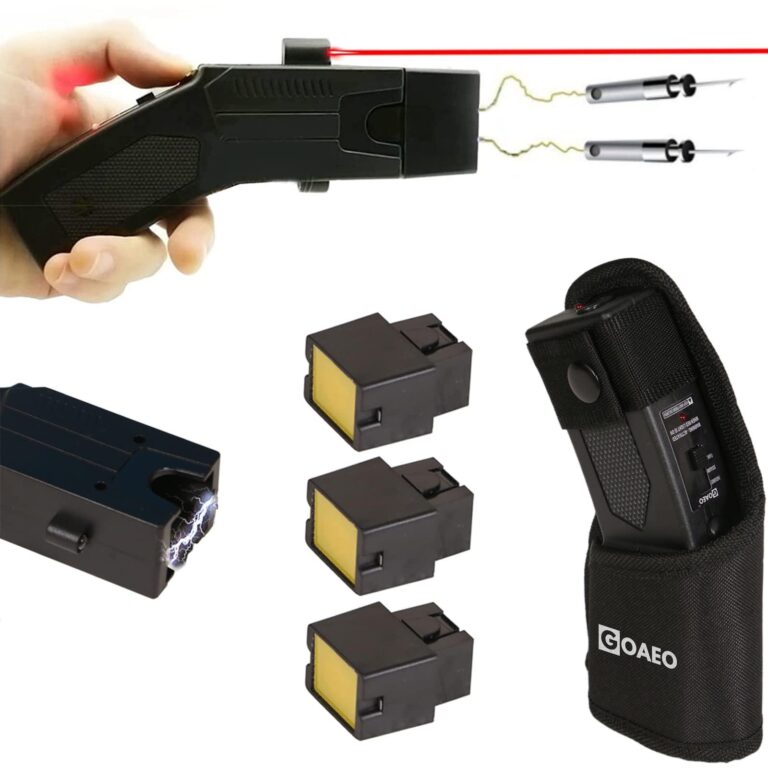Table of Contents
- Understanding the Electrical Mechanism Behind Stun Guns
- The Impact of Electrical Pulses on Muscle Control
- Safety Considerations When Using a Stun Gun
- Best Practices for Effective and Responsible Use of Stun Guns
- Future Outlook
Understanding the Electrical Mechanism Behind Stun Guns
At the core of a stun gun’s operation lies a compact electrical circuit designed to generate a high-voltage, low-current shock. This shock is delivered through the contact points on the device and targets the neuromuscular system. By producing rapid pulses of electricity, the stun gun disrupts the normal communication between the brain and muscles, temporarily overriding voluntary control. The electrical charge emitted is typically between 40,000 and 150,000 volts, but it operates at a low amperage to prevent permanent injury, focusing instead on incapacitation.
Key components work in unison to achieve this effect:
- Transformer: Steps up the voltage to a high level.
- Capacitor: Stores electrical energy and releases it in rapid bursts.
- Oscillator: Converts DC power into a high-frequency alternating current.
When triggered, these parts create a fast, pulsed electric shock that interferes with the normal electrical signals sent to muscles, causing them to spasm uncontrollably and immobilize the target. This precise disruption of muscle control is what makes stun guns effective self-defense tools without causing lasting damage.
The Impact of Electrical Pulses on Muscle Control
When an electrical pulse from a stun gun reaches the body, it interferes directly with the communication between the brain and muscles. The stun gun delivers a sudden, high-voltage but low-current electrical charge that overloads the neuromuscular system. This disruption causes involuntary muscle contractions, essentially short-circuiting the muscles’ ability to respond to voluntary commands. The result is a temporary paralysis or loss of control over the muscles, rendering the target unable to resist or move effectively.
Several factors contribute to how effectively these pulses disrupt muscle control:
- Pulse frequency and duration: The stun gun emits a rapid series of pulses designed to maximize interference without causing permanent injury.
- Current pathway: The electric current travels between contact points or probes, targeting major muscle groups to induce maximum disruption.
- Muscle fiber composition: Different muscle fibers respond variably to electrical stimulation, affecting the duration and intensity of muscle incapacitation.
By exploiting the body’s electrical sensitivity, stun guns create an immediate and temporary shutdown of muscle control, making them an effective non-lethal method for incapacitation.
Safety Considerations When Using a Stun Gun
While stun guns serve as effective tools for self-defense by temporarily incapacitating an attacker, it’s crucial to handle them with care and respect. Proper training and understanding of the device’s function can prevent unintended injuries. When using a stun gun, always ensure it is pointed away from yourself and others to avoid accidental shocks. Moreover, be mindful of the legal restrictions in your region, as possession and use of stun guns vary widely and could have legal consequences if not adhered to.
Maintaining the device is just as important as knowing how to operate it safely. Here are some key precautions to keep in mind:
- Regularly check the battery life to ensure effective performance when needed.
- Avoid contact with water or using the device in damp environments to prevent malfunction or electric shock.
- Never use excessive force when applying the stun gun to the target area, as the device’s electrical discharge works without pressure.
- Store the stun gun securely to keep it out of children’s reach and prevent accidental discharge.
Best Practices for Effective and Responsible Use of Stun Guns
When handling a stun gun, it’s crucial to prioritize safety and responsibility to minimize harm and ensure effective self-defense. Always start by familiarizing yourself with the device’s operation and legal restrictions in your area. Practicing on a non-living target, such as a heavy rubber mat or training dummy, can build confidence without risk. Remember, the primary goal is to temporarily incapacitate an attacker-not to cause permanent injury. Avoid prolonged exposure or repeated discharges, as this can lead to complications or unintended consequences.
In addition to understanding the operational aspect, keep these essentials in mind:
- Maintain Situational Awareness: Always assess your environment and potential threats before using the stun gun.
- Target Specific Areas: Aim for large muscle groups such as thighs or shoulders to maximize effectiveness while minimizing injury.
- Respect Legal Guidelines: Know the laws governing stun gun possession and use in your jurisdiction to avoid legal repercussions.
- Store Securely: Keep the device in a safe place away from children or unauthorized users.
Future Outlook
In conclusion, stun guns are fascinating devices that leverage electric currents to temporarily disrupt muscle control, providing a non-lethal means of self-defense. By understanding the science behind how these tools interfere with the nervous system’s ability to coordinate muscle movements, we can better appreciate their effectiveness and limitations. Whether you’re considering a stun gun for personal protection or simply curious about the technology, staying informed ensures safe and responsible use. As always, remember that knowledge is the first step toward empowerment.Check Our Other Blogs
- StunGun – Your Trusted Source for Stun Guns, Laws, and Self-Defense Tips
- PepperSprayLaws – Your Trusted Resource for Pepper Spray Information
- StunGunLaws – Your Trusted Guide to Stun Gun Legality and Safety





